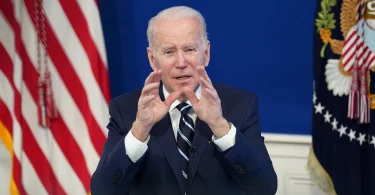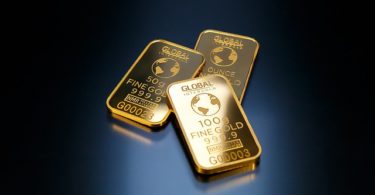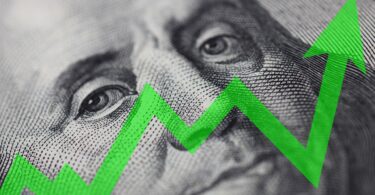By James Rickards, James Rickards, 2024-06-17
This post Did the Saudis Just Kill the Dollar? appeared first on Daily Reckoning.
There's been a lot of talk over the past several days that Saudi Arabia is ending the petrodollar deal it's had with the U.S. for 50 years. This story has been highly exaggerated. Today I want to address the misinformation you're seeing right now, and show you what really happened.
News services of dubious accuracy reported that Saudi Arabia had ended the petrodollar deal on June 9, after 50 years. This report was quickly followed by claims that oil would now be priced in everything from Chinese CNY to Indian INR, Russian RUB and other currencies without strong claims to being reserve currencies.
The implication of these stories was that the U.S. dollar's long reign as the leading global reserve currency was over. New reserve currencies would come to the fore, most prominently the BRICS planned currency.
The crypto crowd wasn't far behind shouting that the demise of the dollar proved that cryptocurrencies were the way of the future. The internet was on fire with these and other histrionic claims.
Don't Buy It
In fact, almost everything you just read is nonsense. There have been some very important developments in international finance and monetary policy in recent days but they're far more nuanced and ultimately more important than stories grabbing the headlines.
As the saying goes, it's complicated. Let's deconstruct what's actually going on.
The petrodollar deal was concluded in June 1974 under the Nixon administration. It was a tense time following the 1973 Yom Kippur War and the Saudi oil embargo of exports to the U.S.
I played a role in the run-up to the deal when I went to the White House to meet with Helmut Sonnenfeldt, Henry Kissinger's most trusted aide. We discussed a plan to invade Saudi Arabia in case the Saudis didn't agree to what the Nixon administration had put on the table.
The deal had four main parts.
The Petrodollar Deal
Saudi Arabia would price oil in U.S. dollars. Saudi Arabia would take the dollars it earned through oil sales and invest them in U.S. Treasury securities or in large bank CDs. The Treasury and the banks would lend those dollars to developing economies that would purchase equipment and agricultural products from the U.S. Finally, the U.S. offered Saudi Arabia military protections against the Soviets and regional rivals. The security agreements and the financial agreements were put into writing but have never been revealed.
The petrodollar deal was a win-win for the participants and the world. The U.S. found a reliable prop for the dollar's reserve currency status (since other countries would need dollars to buy their own oil) and Saudi Arabia enhanced its national security.
Recycling the Saudi dollars to developing country buyers was a boost to world trade and commodity prices and helped pull the world out of the severe 1974 recession. At the Saudi's request, the U.S. kept a veil of secrecy over the exact amount of Treasuries owned by Saudi Arabia; their holdings were lumped in with other OPEC members from the region and were not reported separately.
Less Than Meets the Eye
The deal was never a formal treaty ratified by the Senate, which would rise to the level of law. It was a non-binding executive agreement; not much more than a written handshake. It contained annual renewal provisions and could be terminated at any time by either party.
The Saudis held up their end by pricing oil in dollars and buying U.S. Treasuries. The U.S. held up its end by sending troops and repelling Iraq's invasion of Kuwait in Operations Desert Shield and Desert Storm in 1990–91. The agreement suited both sides and so it continued.
The agreement never had an explicit “expiration date” so reports that the deal has expired are overstated. The Saudis have notified the U.S. that they're not extending the deal, but that decision has to be put in the context of other U.S.-Saudi discussions.
Not Much Is Different
On the financial side, Saudi Arabia would continue to price oil in dollars but could agree to be paid in other currencies, primarily EUR, as is the case today. The Saudis would continue to purchase Treasury securities alongside its holdings of gold.
In short, not much would change from the current petrodollar deal except for the enhanced security guarantees.
The reason Saudi Arabia allowed the existing deal to lapse was to gain leverage in the new negotiations and because the old deal would be replaced by the new deal in all events.
Not a Dollar Death Blow
Oil will not be priced in rupees, rubles, yuan or other emerging-market currencies except in very small quantities. About 20% of oil purchases today are in euros and that can be expected to continue.
The new arrangement between Saudi Arabia and the U.S. doesn't mark the end of the dollar as the world's leading reserve currency. It doesn't imply the collapse of the global market in U.S. Treasury securities, which a lot of people have been claiming in recent days.
The oil and dollar markets will be business as usual. Ties between the Saudis and the U.S. will be even closer because of the nuclear enrichment aspect of the new deal.
Incremental Steps
Russia announced they were working with other BRICS+ members to develop a global payments system completely independent of existing Western systems including SWIFT, Fedwire and other clearinghouses.
Putin also met with Dilma Rousseff, former president of Brazil and current president of the New Development Bank, which is a de facto central bank and development lender to the BRICS+ and associated members.
That meeting was to discuss the roll-out of the new BRICS currency. It will be called the Unit and its value will be based on a weight of gold (40%) and a basket of BRICS+ currencies (60%).
Not a Reserve Currency
Importantly, the BRICS Unit will initially be a payment currency, not a reserve currency. Payment currency arrangements are fairly straightforward. Reserve currency status is far more difficult because it requires a large, liquid bond market; good rule of law; and an infrastructure of dealers, hedging tools, repurchase agreements, auctions and settlement procedures.
Even as a payment currency, the BRICS Unit could be used in a material percentage of global trade, giving the dollar a run for its money. The BRICS Unit doesn't mark the end of the dollar as a widely accepted currency.
Still, in conjunction with the badly misguided weaponization of the dollar by Joe Biden and Janet Yellen it could mark the beginning of the end.
The post Did the Saudis Just Kill the Dollar? appeared first on Daily Reckoning.








